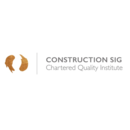Failure modes and effect analysis (FMEA)
Contents |
[edit] What is FMEA and when is it used?
FMEA is a step by step approach for collecting knowledge about possible points of failure in a design, manufacturing or construction process, product or service:
- When a process, product or service is being designed or redesigned
- When an existing process, product or service is being applied in a new way
- Before developing control plans for a new or modified process
- When improvement goals are planned for an existing process, product or service
- When analysing failures of an existing process, product or service
- Periodically throughout the life of the process, product or service.
[American Society for Quality (ASQ) 2017]
[edit] History of FMEA
FMEA was first used by the US navy in 1949 to understand and control the risks in their procedures, including operation of weapon systems. It was also used in the 1960’s for the Apollo missions and then from the 1970’s by the automotive industry.
[edit] Use of FMEA in the project Lifecycle
It can be used by project teams to assess and control how a process or item can fail for example:
- Design – to check the feasibility of design prior to build
- Material – to ensure correct selection of material prior to build
- Construction – to understand risks in assembly prior to build
- Commissioning – to understand potential operational failures prior to use
- Changes to Plan – the potential risks resulting from having to change a process or an item
[edit] Benefits
- Captures collective knowledge of team
- Improves quality, reliability and safety of the process
- Logical structured process identifying areas of concern
- Reduces development time and cost
- Quality led activity
[edit] Steps to undertake the FMEA
[edit] Setup
|
Preparation for Workshop |
Assembling the Team
|
Creating FMEA Template
|
[edit] Consider potential failures (for each critical item / process list the potential points of failure)
Failure Mode |
Effect of failure
| ||||||
Cause of failure
|
Current controls |
[edit] Assessment of failure
|
Occurrence (OCC)
|
Severity (SEV) |
|
Detection (DET) |
Risk Priority Number (RPN)
|
[edit] Actions to be taken
|
Revised Assessment
|
Post FMEA
|
[edit] Related Tools
- DFMEA – procedure used in engineering to explore the possibility of a design failing in a real world situation.
- PFMEA – procedure which focuses on the failures of a process
- FMECA – extension to FMEA which introduces an additional metric called criticality.
This article was originally written by Alan Grogan on behalf of the CQI Construction Special Interest Group, reviewed by members of the Competency Working Group and approved for publication by the Steering Committee on 1 May 2019.
--ConSIG CWG 20:27, 26 May 2019 (BST)
[edit] Related articles on Designing Buildings
- Annex SL.
- Change control: a quality perspective.
- Cracking and building movement.
- Defects.
- Design Failure Mode and Effects Analysis.
- Failure.
- How to write an inspection and test plan.
- Inspection and test plan.
- Latent defects.
- Lifts and escalators: a quality perspective.
- Mobilisation to site: a quality perspective.
- Patent defects.
- Quality tools: fishbone diagram.
- Smarter systems predicting failure.
- Structural steelwork: a quality perspective.
- Why should quality be important to the construction industry?
Featured articles and news
The Building Safety Forum at the Installershow 2025
With speakers confirmed for 24 June as part of Building Safety Week.
The UK’s largest air pollution campaign.
Future Homes Standard, now includes solar, but what else?
Will the new standard, due to in the Autumn, go far enough in terms of performance ?
BSRIA Briefing: Cleaner Air, Better tomorrow
A look back at issues relating to inside and outside air quality, discussed during the BSRIA briefing in 2023.
Restoring Abbotsford's hothouse
Bringing the writer Walter Scott's garden to life.
Reflections on the spending review with CIAT.
Retired firefighter cycles world to raise Grenfell funds
Leaving on 14 June 2025 Stephen will raise money for youth and schools through the Grenfell Foundation.
Key points for construction at a glance with industry reactions.
Functionality, visibility and sustainability
The simpler approach to specification.
Architects, architecture, buildings, and inspiration in film
The close ties between makers and the movies, with our long list of suggested viewing.
SELECT three-point plan for action issued to MSPs
Call for Scottish regulation, green skills and recognition of electrotechnical industry as part of a manifesto for Scottish Parliamentary elections.
UCEM becomes the University of the Built Environment
Major milestone in its 106-year history, follows recent merger with London School of Architecture (LSE).
Professional practical experience for Architects in training
The long process to transform the nature of education and professional practical experience in the Architecture profession following recent reports.
A people-first approach to retrofit
Moving away from the destructive paradigm of fabric-first.
International Electrician Day, 10 June 2025
Celebrating the role of electrical engineers from André-Marie Amperè, today and for the future.
New guide for clients launched at Houses of Parliament
'There has never been a more important time for clients to step up and ...ask the right questions'
The impact of recycled slate tiles
Innovation across the decades.
EPC changes for existing buildings
Changes and their context as the new RdSAP methodology comes into use from 15 June.

























